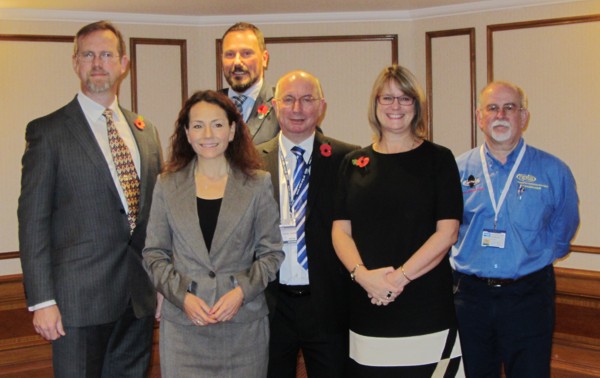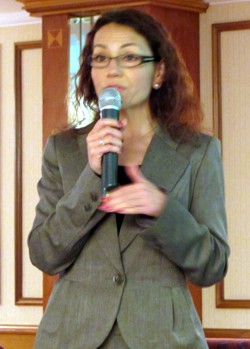The Pest Control News workshop at PestTech 2014 addressed the issue of Second-Generation Anticoagulant Rodenticides (SGARs) stewardship with two representatives from industry regulator, the Health and Safety Executive (HSE), braving the lion’s den and joining the panel for the stewardship discussion.
After a brief introduction by Rupert Broome, Killgerm group managing director, Sarah Shore, head of biocides, pesticides and environment at HSE’s Chemicals Regulation Directorate, summarised the current position with the Second-generation anticoaglant rodenticides.
|
From an industry perspective it was good to hear that she genuinely seemed to understand what she described as ‘the legitimate and necessary use of SGARs for the control of rodents to protect public health’. But she also explained how science moves on and how, through the EU review system, older products are re-examined against modern criteria. When this happened to the SGARs they all failed on environmental grounds; and by a long way! In view of the lack of alternative means of controlling rodents, however SGARs have been given a stay of execution but only if their environmental impact can be reduced. To this end, HSE brought the industry, and other interested groups together, and asked them to come up with a way to reduce the impact of SGARs on non-target species. This work has been co-ordinated by the Campaign for Responsible Rodenticide Use (CRRU) through the four sector groups: agricultural industries, gamekeeping, professional pest control & local authorities and suppliers (including amateur use). |
|
|
Sarah went on to explain that HSE is now essentially at the stage where things can move forward for the professional pest control & local authority sector. In practice this will mean that HSE will begin to authorise products in accordance with the new stewardship scheme. This in turn means there will be new wording on product labels to look out for. Following Sarah’s presentation, Rupert Broome outlined some of the activities in the stewardship programme. He said that the professional pest control sector was in good shape to meet the demands of stewardship because: “We are already committed to training to RSPH Level 2, or its equivalent, and because we already have a good CPD system in place.” He explained how distributors will be introducing more stringent proof of competence checks before supplying products. Whilst manufacturers and suppliers have agreed to fund research into residue levels in barn owls so that regulators can measure the impact of stewardship on non-target species. There will also be population studies and studies into the breeding success of barn owls. (Let’s hope we don’t get any sustained severe weather as this can have a devastating effect on barn owl populations.) Manufacturers and suppliers have also committed to share in confidence with HSE details of the quantity of SGARs they sell. The discussion was then opened up to the floor. One of the first questions was about what happens if the other sectors don’t follow the rules. Sarah Shore was quick to point out that HSE would not immediately jump into a ban, but she made it clear that each sector would have to pull its weight. Reading between the lines that might well mean a ban for one sector, whilst others are allowed to carry on. Inevitably talk of other user groups led to comments about amateur misuse. Iain Turner, chairman of the National Pest Technicians Association (NPTA), addressed this issue. He pointed out that we need to get our house in order. “How many rat boxes are there out there,” he said. “Hundreds of thousands, millions even? Who put them there, how many of them are full of toxic bait and what’s eating the bait? In my experience it is much more likely to be field mice and voles that are taking the bait than rats. We have to get our own house in order before we start pointing the finger at anyone else!” One of the other important questions was to do with ‘indoor’ and ‘outdoor’ use. All SGARs will be treated the same as far as HSE is concerned, so going forward there will be no distinction between ‘indoor’ and ‘outdoor’ products. However, that’s not to say that manufacturers won’t make a distinction. It is manufacturers who decide how they want their products used. HSE merely looks at what the manufacturer wants and decides whether it can be authorised or not. Commenting on timing Sarah Shore said that the SGARs stewardship proposals are now going through a final consultation which will be completed by Christmas. This is pretty much a formality and HSE is not expecting any drastic changes to the scheme for our sector – so watch this space in the New Year when we hope to be able to bring you fuller details of what you’ll have to do to comply.
|
|



